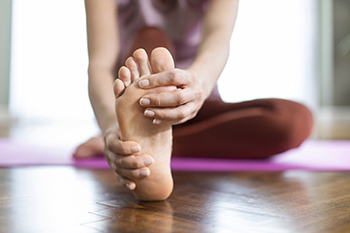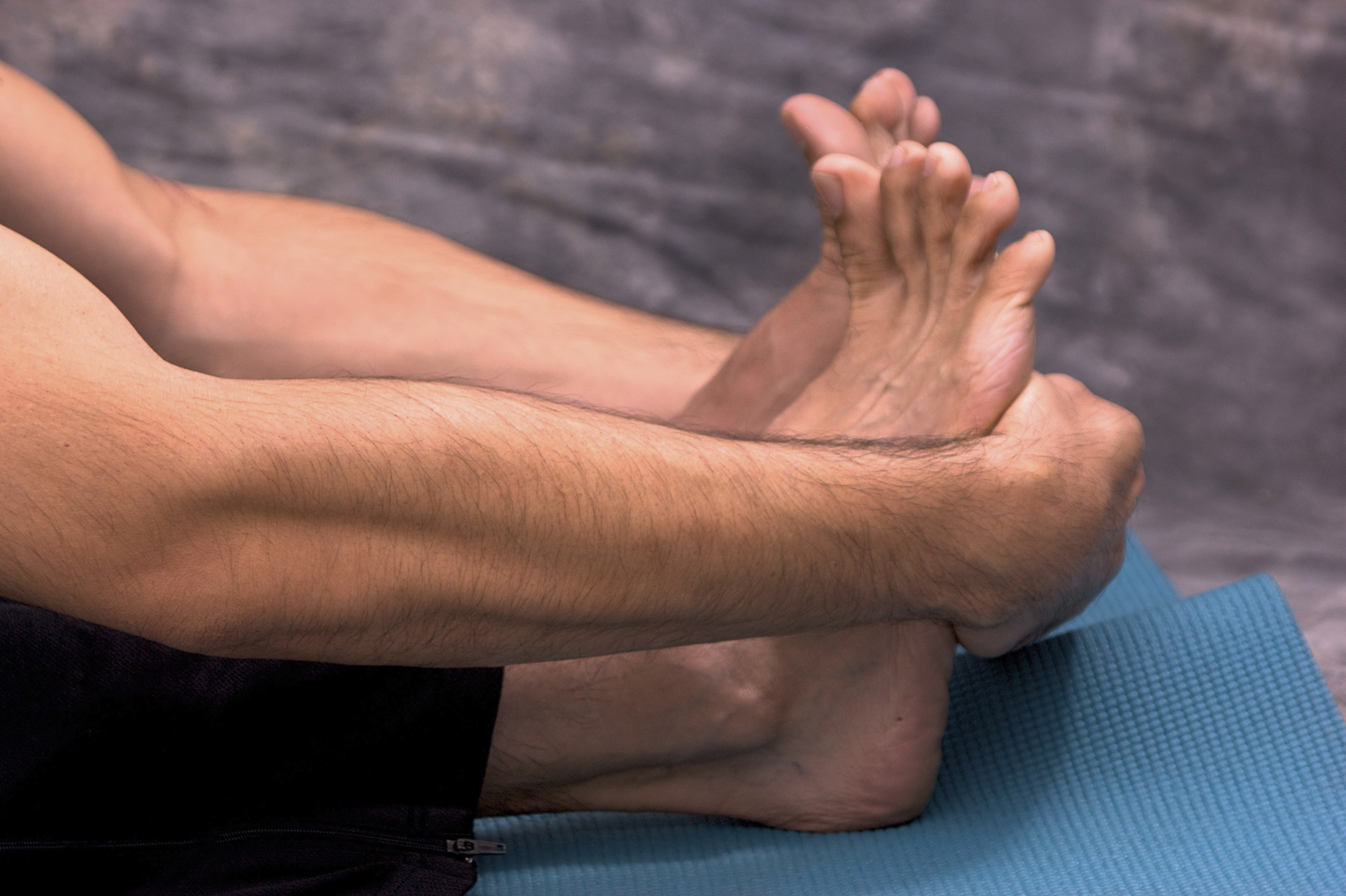Items filtered by date: August 2025
Foot and Ankle Pain in Runners

Foot and ankle pain is a common issue for runners, often resulting from muscle imbalances, over-training, prior injuries, poor foot biomechanics, or inappropriate footwear. The specific location of the pain can help identify the cause. Pain on the top of the foot may indicate extensor tendonitis, tight shoes, or a stress fracture. Pain on the side of the foot could be caused by a ligament sprain, tendonitis, or a stress fracture. Pain on the outer edge of the foot is often linked to peroneal tendonitis, cuboid syndrome, or a ligament sprain. Heel pain is frequently caused by Achilles tendonitis, bursitis, or a bone spur. Arch pain can be related to plantar fasciitis, muscle cramps, or plantar fibroma. Additionally, ankle pain may stem from ligament sprains, muscle imbalances, or ankle impingement. A chiropodist can help by diagnosing the cause and offering appropriate treatments. If you are experiencing foot or ankle pain during or after a run, it is suggested that you schedule an appointment with a chiropodist for expert advice and guidance.
Although running is a wonderful exercise to keep you in shape, it can wreak havoc on your feet and ankles if you don’t take preventive measures. If you have sustained a foot and ankle injury from running, please consult with Cynthia Chan, B.Sc., D.Ch from Healthy Advantage Foot & Orthotic Clinic. Our practitioner can help you maintain the health of your lower limbs and your mobility.
Some common running injuries include:
- Achilles tendonitis
- Shin splints
- Ankle sprains
- Stress fractures
- Plantar fasciitis
- Bursitis
What causes injuries?
These injuries are usually caused by overtraining, wearing the wrong shoes, running on hard surfaces, having tight and inflexible muscles, or having biomechanical issues in the feet or ankles.
What can I do to prevent injuries?
- Train slowly and gradually
- Give yourself plenty of time to recover following a run
- Wear shoes that fit properly and support your foot
- Avoid running on hard surfaces, like concrete
- Stretch and strengthen the muscles of your lower legs
- Warm-up prior to a run
- Have your gait analyzed and your feet examined by a chiropodist to determine if there are any biomechanical problems that need to be treated
If you have any questions, please feel free to contact our office located in . We offer the newest diagnostic and treatment technologies for all your foot care needs.
Treating Big Toe Joint Pain Without Surgery

Big toe joint pain is often caused by hallux rigidus, a type of arthritis that leads to stiffness and discomfort in the joint at the base of the big toe. This condition typically develops gradually as cartilage wears away from repeated bending of the toe during walking. Common signs include pain in the big toe joint, swelling, and the formation of bony growths on the top of the joint that can make movement even more difficult. The pain tends to increase with prolonged walking or when the toe is forced upward. Non-surgical treatment for big toe pain focuses on limiting motion in the joint to reduce inflammation and discomfort. A stiff-soled shoe or a specially designed orthotic insert can help reduce movement in the toe and ease pressure when walking. A chiropodist can recommend footwear modifications, prescribe custom orthotics, and offer options to manage symptoms effectively. If you are experiencing pain in your big toe, it is suggested that you schedule an appointment with a chiropodist for expert advice and appropriate treatment options.
Toe pain is common and can have a variety of causes. Causes can range from a broken toe to an ingrown toenail. Many types of toe pain can be corrected, but any toe pain that inhibits your activities for an extended period should be discussed with a chiropodist. If you suffer from toe pain, please consult with Cynthia Chan, B.Sc., D.Ch from Healthy Advantage Foot & Orthotic Clinic. Our practitioner can help you maintain the health of your feet.
Common Causes of Toe Pain
- Trauma or fracture
- Cuts, sores, or bruises
- Rheumatoid arthritis
- Gout
- Turf Toe
- Morton’s neuroma
- Blisters
- Corns
- Bunions
- Hammertoes
- Ingrown toenails
- Plantar warts
- Athlete’s Foot
Symptoms of Toe Pain
- Toe deformity
- Burning
- Numbness
- Toenail deformity
- Wart or ulcer
- Swelling
- Redness
When to See a Chiropodist
- Bleeding or severe swelling
- Trauma, such as a broken bone
- Discoloration or extreme swelling
- Inability to bear weight
- Persistent pain
- Wounds that won’t heal
Diagnosis of Toe Pain
A chiropodist can conduct a thorough examination of the painful toe or toes in order to determine the best course of treatment. The exam may include assessing the tenderness of the area, taking an X-ray or other diagnostic test, or assessing your gait and range of motion. A discussion of what led to the advanced pain issue may follow. Included will likely be a health history, as well as a list of medications you are taking and other previous injuries you may have sustained.
Treatment for Toe Pain
With such a wide range of possible causes for toe pain, treatment can be varied in scope and length. Sometimes, the chiropodist will recommend lifestyle and activity changes. In cases of trauma or other injuries, X-rays or imaging tests will likely be used to determine the severity of the problem, particularly if any bones have been broken. Treatment may also include injections of pain-relief medication or anti-inflammatory drugs. Certain injuries will require the splinting, bracing, or wrapping of injured toes. Orthotics or special shoes may be prescribed in cases of bone deformities and gait issues. Removal of warts, calluses, and corns may be needed. In other cases, such as with patients who have diabetes or rheumatoid arthritis, ongoing treatment may be required to avoid more serious problems.
If you have any questions, please feel free to contact our office located in . We offer the newest diagnostic and treatment technologies for all your foot care needs.
Keeping Your Feet Strong and Flexible

Healthy feet provide the foundation for daily activities, and regular movement can keep them in top condition. Spreading your toes apart helps improve flexibility and circulation. Lifting small items from the floor with your toes strengthens the small muscles that support your arches. Rotating your ankles in slow circles encourages joint mobility and reduces stiffness. Rolling the soles of your feet over a ball can relieve tension and keep the tissues supple. Stretching your calves by pressing your heels into the ground supports proper alignment and may ease heel discomfort. Including these foot exercises and stretches in your daily routine can help you stay comfortable whether walking, standing, or engaging in sports. If you notice persistent pain or changes in the way your feet feel or move, it is suggested that you see a chiropodist for a diagnosis and treatment.
Stretching the feet can improve their flexibility and overall strength, and can help prevent or reduce the impact of foot injuries. For more information about stretching your feet, please consult with Cynthia Chan, B.Sc., D.Ch from Healthy Advantage Foot & Orthotic Clinic. Our practitioner will assess your condition and provide you with quality foot and ankle treatment.
Why Stretching the Feet Is Important
Your feet support the weight of your entire body as you go about your daily activities. As with any other part of your body, stretching and exercising the feet can help maintain their overall health, reduce foot pain, and prevent future injuries.
How to Stretch
There are a variety of foot stretches and exercises that you may try. It is recommended that you speak with a chiropodist to learn which exercises are best for you.
Some examples include:
- Heel Raises - Hold onto a wall for balance as you slowly rise up on your tiptoes. Hold the position for several seconds, then lower your feet back to the ground. Repeat 10 times.
- Toe Splay - Sit in a chair with your feet flat on the ground. Spread your toes as far apart as you can, holding for several seconds. Repeat 10 times.
- Towel Scrunches - Sit in a chair and lay a towel flat on the floor in front of you, placing your foot on top of it. Using only your toes, scrunch up the towel pulling it towards you. Repeat several times with each foot.
- Plantar Fascia Massage - Sit in a chair and place a round or cylindrical object (such as a tennis ball, water bottle, or foam roller) under the arch of your foot. Slowly push your foot forward and backward while applying pressure to the object. Maintain the object between your heel and toes. Do this for about 30 seconds. Repeat on the other foot.
If you have any questions, please feel free to contact our office located in . We offer the newest diagnostic and treatment technologies for all your foot care needs.
Gout Pain Can Be Managed
Recognizing and Treating Toenail Fungus

Toenail fungus is a common infection that can damage the nail and surrounding tissue. It often starts when microscopic fungi invade the nail, thriving in warm, damp environments, like shoes. These fungi feed on keratin, the protein that forms the hard nail surface. Toenail fungus is more likely to affect the big toe or little toe, possibly due to shoe pressure. Risk factors include wearing tight shoes, poor foot hygiene, heavy use of nail polish, certain chronic illnesses like diabetes, and exposure to communal showers. Symptoms include thickened, yellow or brown nails, buildup beneath the nail, and sometimes pain or discomfort while wearing shoes. In some cases, the nail may crumble or fall off. A chiropodist can assess your toenails, trim away affected areas, and prescribe topical antifungal treatments. Early care can help prevent it from spreading or worsening. If you have symptoms of toenail fungus, it is suggested that you schedule an appointment with a chiropodist for help in managing this infection.
Toenail fungus can be uncomfortable and unsightly. If you have diabetes or a compromised immune system, it may also be dangerous. To learn more about treatment options, please consult with Cynthia Chan, B.Sc., D.Ch from Healthy Advantage Foot & Orthotic Clinic. Our practitioner will assess your condition and provide you with quality foot and ankle treatment.
What Does Toenail Fungus Look Like?
A fungal infection of the toenail may cause the affected nail to become thickened, brittle, crumbly, and yellowish or brown in color. Sometimes the toenail may separate from the nail bed, become deformed, emit a foul odor, or cause pain or discomfort.
What Causes Toenail Fungus?
Toenail fungus is caused by a fungus that infects the nail bed. The fungus lives and thrives in warm and moist environments and is also contagious. Athlete’s foot, which is a fungal infection of the skin, may spread to the nails and cause toenail fungus.
What Treatments Are Available?
Potential treatments for toenail fungus may include oral antifungal medications, topical antifungal medications, such as medicated nail polishes that are applied directly to the affected nail, and laser therapy. Sometimes, a combination of treatments is prescribed.
If you have any questions, please feel free to contact our office located in . We offer the newest diagnostic and treatment technologies for all your foot care needs.
